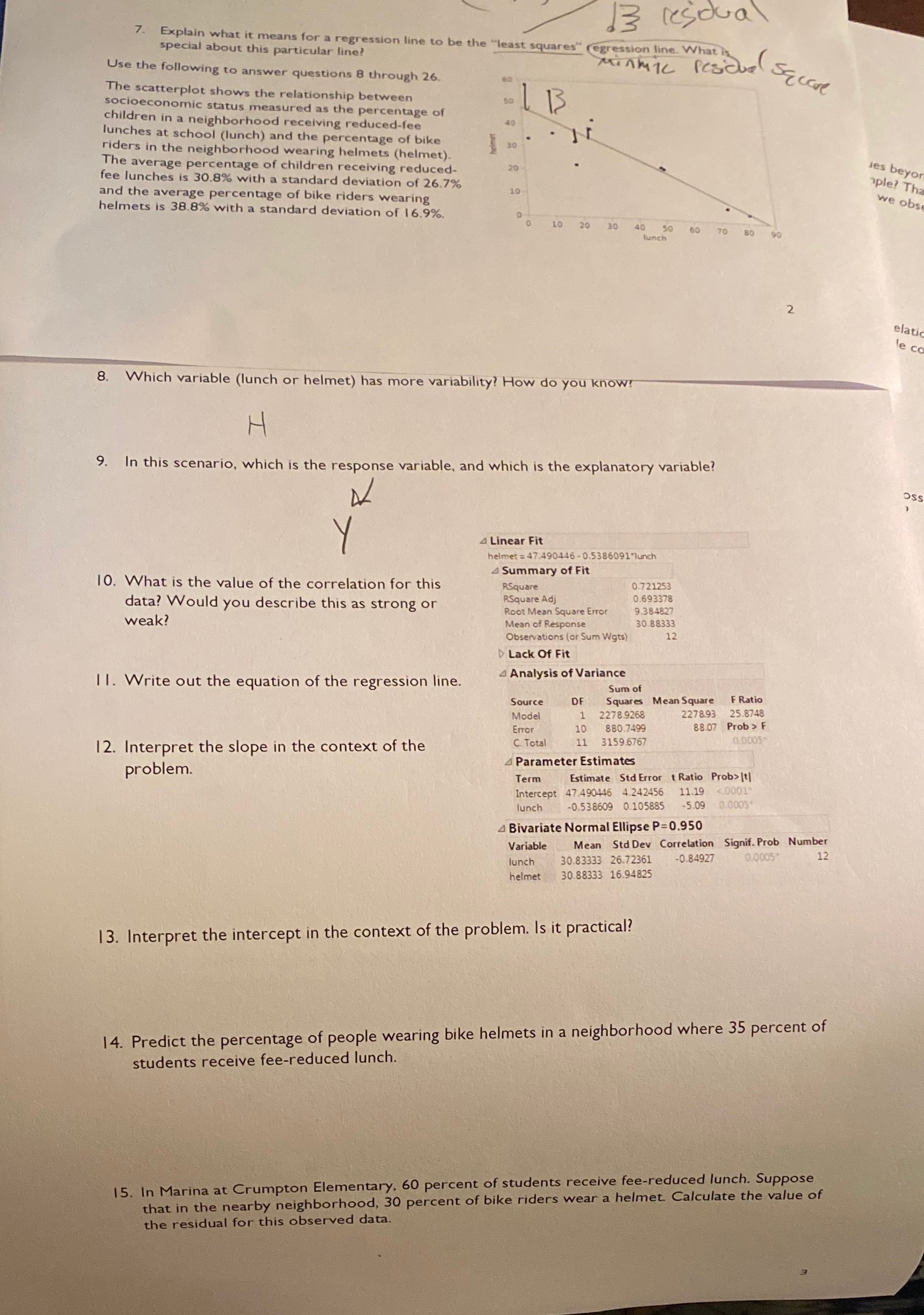
13 residual 7. Explain what it means for a regression line to be the "least squares" (egression line. What is special about this particular line? Use the following to answer questions 8 through 26. Minmile residue Secure The scatterplot shows the relationship between socioeconomic status measured as the percentage of I B children in a neighborhood receiving reduced-fee lunches at school (lunch) and the percentage of bike riders in the neighborhood wearing helmets (helmet). The average percentage of children receiving reduced- 20 ies beyor fee lunches is 30.8% with a standard deviation of 26.7% ple? Tha and the average percentage of bike riders wearing we obs helmets is 38.8% with a standard deviation of 16.9%. 10 20 30 40 50 60 70 80 lunch 90 elati le c 8. Which variable (lunch or helmet) has more variability? How do you know? H 9. In this scenario, which is the response variable, and which is the explanatory variable? OSS 4 Linear Fit helmet = 47.490446 - 0.5386091"lunch 4 Summary of Fit 10. What is the value of the correlation for this RSquare 0.721253 data? Would you describe this as strong or RSquare Adj 0.693378 Root Mean Square Error 9.384827 weak? Mean of Response 30 88333 Observations (or Sum Wgts) 12 D Lack Of Fit 1 1. Write out the equation of the regression line. Analysis of Variance Sum of Source DF Squares Mean Square F Ratio Model 2278.9268 2278.93 25.8748 Error 10 880.7499 88.07 Prob > F 12. Interpret the slope in the context of the C. Total 11 3159.6767 problem. 4 Parameter Estimates Term Estimate Std Error t Ratio Prob> |t| Intercept 47.490446 4.242456 11.19 DO01 lunch -0.538609 0.105885 -5.09 0.0005 Bivariate Normal Ellipse P=0.950 Variable Mean Std Dev Correlation Signif. Prob Number lunch 30.83333 26.72361 -0.84927 0.0005 12 helmet 30.88333 16.94825 13. Interpret the intercept in the context of the problem. Is it practical? 14. Predict the percentage of people wearing bike helmets in a neighborhood where 35 percent of students receive fee-reduced lunch. 15. In Marina at Crumpton Elementary, 60 percent of students receive fee-reduced lunch. Suppose that in the nearby neighborhood, 30 percent of bike riders wear a helmet. Calculate the value of the residual for this observed data








